This is a known hack to change the tint color of UISegmentedControl
let sortedViews = listSegmentedControl.subviews.sorted( by: { $0.frame.origin.x < $1.frame.origin.x } )
for (index, view) in sortedViews.enumerated() {
if index == listSegmentedControl.selectedSegmentIndex {
view.tintColor = UIColor(patternImage: gradientImage)
} else {
view.tintColor = UIColor.gray //Whatever the color of non selected segment controller tab
}
}
Though looks like a ugly hack, I have been using it from a quite a while and seems fairly straight forward. Hope it helps.
EDIT:
Is this what you need buddy?

If yes lemme know, Ill post the code for the same.
EDIT 2:
As OP has mentioned in his comment that the output he is expecting is same as the one I showed in image above, providing code for the same.
Disclaimer:
As mentioned by rmaddy in his comments below, this is a hack and makes use of undocumented (Complete public API though) but a very well known hack to change the tint color of UISegemntedControl that exists from as far as iOS 5 (Thats how I remember, lemme know if I am wrong )
So use answer with the caution in mind that, in future releases of iOS Apple might change the structure of subviews in UISegemntedControl and might affect your O/P. Nothing that I can see, will result in crash but might affect the way O/P is rendered on screen.
I have declared a variable so that GradientImage can be generated only once, but its up to your implementation to use it the way you want
var gradientImage : UIImage! = nil
In ViewDidLoad I initialize the gradientImage and UISegmentedControl as
override func viewDidLoad() {
super.viewDidLoad()
gradientImage = gradient(size: segmentControl.frame.size, color: [UIColor.black, UIColor.red])!
//I have specified custom font need not necessarily be used
//Font color attribute is important though, usually `UISegementedControl` title takes color from tint color, because we might need a different color for text to highlight above gradient color am using custom font colors
let font = UIFont(name: "HelveticaNeue-Medium", size: 20)
segmentControl.setTitleTextAttributes([NSFontAttributeName : font!, NSForegroundColorAttributeName : UIColor.blue], for: .normal)
segmentControl.setTitleTextAttributes([NSForegroundColorAttributeName : UIColor.white], for: .selected)
//Set the border color and border to `UISegmentedControl` and also make it round corner
segmentControl.layer.borderColor = UIColor(patternImage: gradientImage).cgColor
segmentControl.layer.borderWidth = 2
segmentControl.layer.masksToBounds = true
segmentControl.layer.cornerRadius = 10
//In order to update the selected Segment tint and background color we need to call multiple statements every time selection changes hence I have moved it to the function and called it in viewDidLoad
updateGradientBackground()
}
Finally updateGradientBackground function definition is same as the one I posted in my original answer
fileprivate func updateGradientBackground() {
let sortedViews = segmentControl.subviews.sorted( by: { $0.frame.origin.x < $1.frame.origin.x } )
for (index, view) in sortedViews.enumerated() {
if index == segmentControl.selectedSegmentIndex {
//very important thing to notice here is because tint color was not honoring the `UIColor(patternImage` I rather used `backgroundColor` to create the effect and set clear color as clear color
view.backgroundColor = UIColor(patternImage: self.gradientImage)
view.tintColor = UIColor.clear
} else {
//very important thing to notice here is because tint color was not honoring the `UIColor(patternImage` I rather used `backgroundColor` to create the effect and set clear color as clear color
view.backgroundColor = UIColor.white //Whatever the color of non selected segment controller tab
view.tintColor = UIColor.clear
}
}
}
Finally, in IBAction of UISegmentedControl, simply call
@IBAction func segmentControllerTapped(_ sender: UISegmentedControl) {
self.updateGradientBackground()
}
Hope this helps

